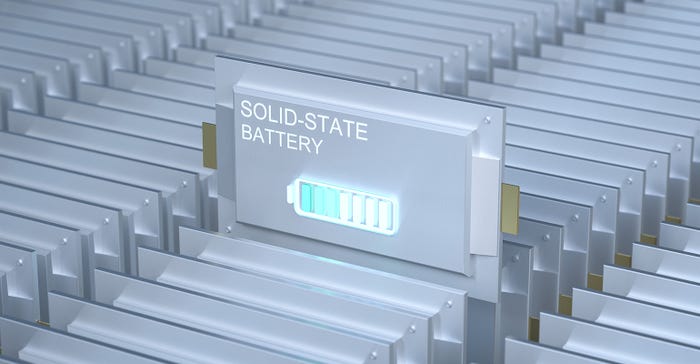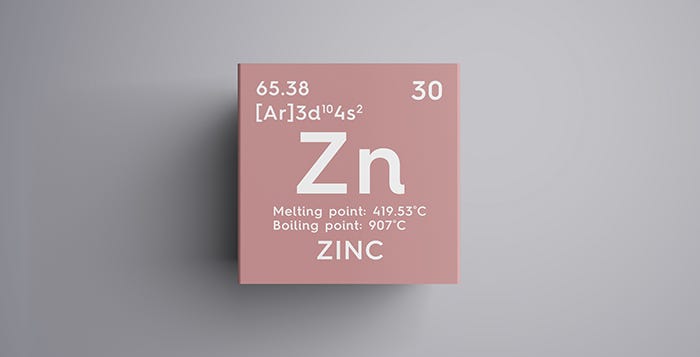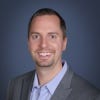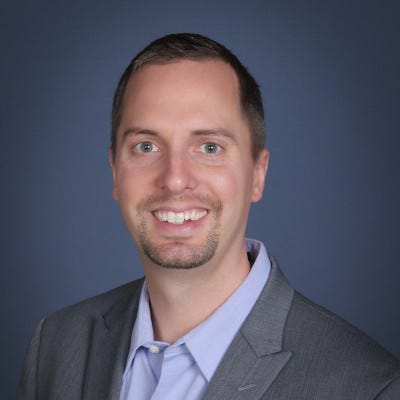The Future of Electric Vehicle Batteries Relies on Multiple Options
Keysight Technologies’ automotive manager examines the pros and cons of solid-state, sodium-ion, and metal-air EV batteries.

Buckle up because this next shift will take some work. The automotive industry is undergoing a fundamental transition from internal combustion towards electrified powertrains. This progression is currently going through some growing pains, but development of next-generation electric vehicle (EV) battery technologies continues to progress unabated. Every week, news on solid-state, sodium-ion, or metal-air battery advancement is released. Will one of these be the solution that catapults EVs to being the dominant market choice, or could it be a multitude of these solutions?
Lithium-ion is the current preferred choice of automakers for EV batteries, but it faces multiple limitations in its use in vehicles. Battery range, price, charging speed, lifetime, and mining and safety concerns continue to hinder lithium-ion use in EVs. While developers are working to remove these constraints, they are also exploring other battery chemistries.
Solid-state, the safer option

3D rendering of solid-state batteries. PHONLAMAIPHOTO/ ISTOCK / GETTY IMAGES PLUS
Solid-state batteries address a critical concern—the safety of the liquid electrolytes used in lithium-ion. These electrolytes pose a flammability risk in case of accidents or overheating. Solid-state batteries replace the liquid with a solid polymer or ceramic electrolyte, offering superior thermal stability. Solid-state batteries also allow for a denser packing of electrodes, potentially leading to a significant increase in energy storage capacity. A solid electrolyte facilitates faster movement of ions within the battery, enabling EVs to charge significantly quicker. Solid-state batteries also offer a longer lifespan compared to lithium-ion due to the reduced risk of dendrite formation.
These benefits translate to longer EV driving ranges, faster charging times, and increased lifetimes. They have also driven significant investment from companies like Toyota and Samsung, aiming for commercialization by the end of this decade. However, challenges remain for solid-state batteries.
Manufacturing solid-state batteries is currently a complex and expensive process. Scaling up production for mass adoption will require continued advancements to bring down the cost. Solid-state electrolyte development continues, but technical hurdles remain around optimizing conductivity and compatibility with electrode materials. Despite these challenges, solid-state batteries hold immense potential to address the range anxiety associated with EVs and significantly the improve charging experience, making them a game-changer for widespread EV adoption.
Sodium-ion, the economical option

Na-ion batteries with table salt. Gerardo Carnero / iStockphoto via Getty Images
Sodium-ion batteries present another intriguing option for EVs. Sodium is significantly cheaper and more abundant than lithium used in lithium-ion batteries. This provides an opportunity to lower battery production costs, a key limitation to making EVs more accessible for many consumers. The abundance of sodium also reduces reliance on lithium mining, which has environmental and ethical concerns. Sodium-ion batteries maintain their performance remarkably well at lower temperatures, making them a suitable option for regions with harsh winters unlike lithium-ion, which delivers reduced efficiency in cold weather.
However, sodium-ion batteries also have their own limitations. Sodium-ion currently provides a lower energy density compared to lithium-ion—translating to shorter driving ranges for EVs using sodium-ion technology. In addition, sodium-ion batteries generally exhibit slower charging speeds compared to their lithium-ion counterparts. This can be a significant drawback for consumers in need of faster charging. As a newer field of research, further development is also needed to optimize sodium-ion battery performance.
Overall, sodium-ion batteries offer a cost-effective and sustainable alternative for specific segments within the EV market. Companies like BYD, CATL, and Faradion are investing in the development of sodium-ion batteries. This technology has the potential to play a crucial role in complementing lithium-ion batteries and diversifying the electric vehicle landscape, helping make EVs a more accessible and sustainable transportation solution.
Metal-air, the sustainable option

Zinc is often used in metal-air batteries. sanches812 / iStock via Getty Images
Another emerging EV battery type being developed is metal-air, encompassing technologies like zinc-air, aluminum-air, and iron-air. Like solid-state, metal-air battery chemistries boast the potential for significantly higher energy density compared to lithium-ion batteries—translating to extended driving ranges for EVs. Certain metal-air batteries, like zinc-air, utilize readily available elements, eliminating the need for complex and potentially harmful electrolytes for a more sustainable option. The use of abundant materials also promises the ability to reduce battery production costs.
Like all battery options though, significant challenges remain for metal-air batteries before widespread implementation in the EV market. Current metal-air battery technology suffers from a shorter lifespan compared to lithium-ion, and frequent recharging can significantly degrade the battery's capacity. Both lithium-air and some other metal-air batteries, like aluminum, face the issue of metal dendrite formation. These structures can damage the battery and reduce its lifespan. Metal-air batteries require a continuous flow of air for operation, necessitating efficient air intake and filtration systems, which adds complexity to the system design and increases energy consumption.
Regardless, metal-air batteries still offer exciting possibilities for the future of EVs due to their high theoretical energy density and potential for a more sustainable approach. These possibilities have driven companies like Duracell, Rayovac, and Nantenergy to invest in metal-air battery development. Overall, metal-air batteries hold serious promise for the future of EVs, but continued advancements are needed before they can compete effectively with lithium-ion technology in the mainstream market.
A More diverse approach
The automotive and chemical industries are researching multiple new battery technologies with a range of chemistries and structures. This is beneficial for the growth of electric vehicles as a diversified approach will most likely be necessary to appeal to different market requirements and use cases. Like the variety of internal combustion technologies—including turbocharging, direct injection, and cylinder layouts—electric vehicle batteries will see a variety of options to meet consumer demands. While lithium-ion batteries will continue to be the dominant choice in EVs in the near term, the industry is not reliant on it being the sole solution for an electrified future.
The capability to select from multiple types of batteries will allow automakers to cater vehicles to specific market needs and preferences. While limitations around electric vehicle range and charging times remain currently, testing and development of batteries of different construction gives the industry the best chance at overcoming these barriers. Because once those barriers are removed, the shift to electrification will be dramatic and quick.
About the Author(s)
You May Also Like





